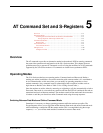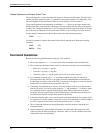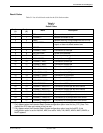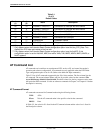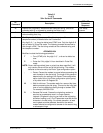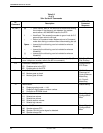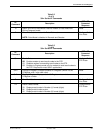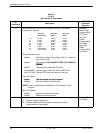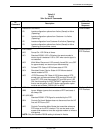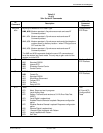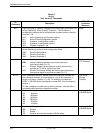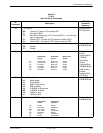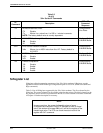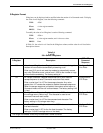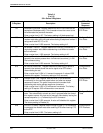
AT Command Set and S-Registers
5-93910-A2-GN32-30 November 1996
Table 5-3
(3 of 8)
391x Series AT Commands
AT
Command
DCP LCD
Command
Sequence
Description
Z
n
Reset and Load Active.
Z0 Loads configuration options from Active (Saved) to Active
(Operating).
Z1 Loads configuration options from Customer 1 to Active
(Operating).
Z2 Loads configuration from Customer 2 to Active (Operating).
Z3 Loads configuration options from Active (Saved) to Active
(Operating) and performs a reset.
Control\Reset
&C
n
LSD Control.
&C0 Forced On. LSD ON at all times.
&C1 Standard RS232. LSD is ON when the remote modem’s
carrier signal is detected. LSD is OFF when carrier signal is
not detected.
&C2 Wink When Disconnect. LSD normally forced ON, turns OFF
for approximately one second upon disconnecting.
&C3 Follows DTR. State of LSD follows state of DTR.
&C4 Simulated Control Carrier. State of LSD follows state of
remote modem’s RTS.
&C5 =DTR/Disconnect Off. State of LSD follows state of DTR
except upon a disconnect where DTR remains ON and LSD
turns OFF. DTR must then toggle OFF and ON to turn LSD
ON. Use this setting for AT&T DATAKITr applications. Note
that to use this option, the DTR Action configuration option
must be set to Stndrd_RS232 (&D1 or &D2).
Configure\Edit\
DTE Interface
&D
n
DTR Action.
&D0 Ignore. Modem ignores the true status of DTR and treats it
as always ON.
&D1,&D2,&D3
Standard RS232. DTR Signal is controlled by the DTE.
&D4 Controls On-Hook. Modem does not disconnect from the VF
line until DTR turns OFF.
&D5 Controls Transmitter Mute. Mutes the transmitter whenever
DTR drops on the DTE interface. This can be used on the
answer side modem to force the originate modem to initiate a
dial backup.
Configure\Edit\
DTE Interface
NOTE: Only the Standard RS232 setting is allowed in Austria.



